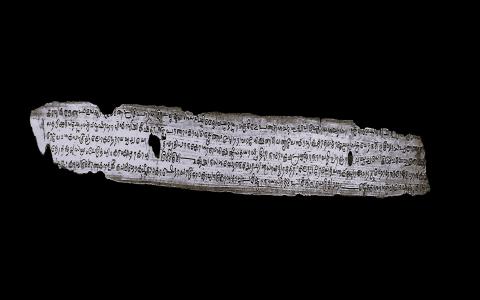
4.7.4. Benevolence
Sāyaṇācārya never turned away people who sought refuge in him. If a band of poets walked barefoot on gravel to seek his patronage, he would ensure they went back on the backs of elephants. A witty verse observes: ‘One glance of Sāyaṇācārya’s is enough to rid a man of all his miseries. But something seems to be amiss with this one man. No matter how many times he presents himself before the minister, he remains destitute and...

4.7. Illustrative Verses
As we have observed previously, the illustrative verses composed by Bhoganātha are of inestimable value to understand Sāyaṇācārya’s personality, his family life, Saṅgama II’s reign, and the overall socio-cultural milieu of the Vijayanagara period. These verses are primarily poetic compositions, and naturally they are tinged with hyperbole and fancy. The presence of such poetic devices only enhances—never diminishes—the...

4.5. Dhvani
As a devout follower of Ānandavardhana, Sāyaṇācārya accepts three śabda-vṛttis: abhidhā, lakṣaṇā and vyañjanā. He does not admit tātparya:
तात्पर्यतोऽर्थमप्येके केचिदालङ्कारिका अनुवाद्यानामर्थानां विधेयार्थपरत्वं तात्पर्यमिति कमपि व्यापारमधिकृत्य तस्मात्प्रतिपन्नमर्थं तात्पर्यार्थमङ्गीकुर्वन्ति—“उमां स पश्यन्नृजुनैव चक्षुषा प्रचक्रमे वक्तुमनुज्झितक्रमः” । अत्र दर्शनस्य चक्षुःकरणत्वाव्यभिचाराद्यत्तदुपादानं तद्विशेषणार्थम्। तदेव...

Let us now examine some of the salient features of Poetics expounded by Alaṅkāra-sudhānidhi.
4.2. Poet and Poetry
The Indian aesthetic tradition holds rasa as the raison d’être of poetry. However, it sees no difference between the joy and education that rasa provides.[1] Alaṅkāra-sudhānidhi agrees with this view but considers education as an additional benefit derived out of enjoying rasa. Using a memorable example, it says: “Deriving upadeśa...

3. Nature of the Text, Authorship Problems
In section 2.2 we have observed that Sāyaṇācārya stayed in Udayagiri and acted as the minister to Kampaṇa I and Saṅgama II during 1345–1365 CE, and that he shifted to Vijayanagara later. Saṅgama II ascended the throne in 1355 CE. Going by these details we infer that Sāyaṇācārya must have authored Alaṅkāra-sudhānidhi during his stay at Udayagiri, perhaps after 1355 CE, close to 1365 CE.[1] After Saṅgama...

2. The Author
2.1. Lineage, Teachers
Sāyaṇācārya was the second son of a pious brāhmaṇa couple, Śrīmatī and Māyaṇa. He belonged to the Bhāradvāja-gotra, Bodhāyana-sūtra and Yajuśśākhā. Traditional belief holds that Sāyaṇācārya’s family hailed from the Hoysaḻa-karṇāṭaka sect of brāhmaṇas. People of this denomination were largely concentrated in South-western Karnataka, in districts such as Hassan, Shimoga and Chikmagalur in the Malnad region.[1...

[We take great pleasure in commencing a series on Alaṅkāra-sudhānidhi, a Sanskrit treatise on Poetics authored by Sāyaṇācārya. The text is critically edited for the first time by Śatāvadhānī Dr. R Ganesh and Shashi Kiran B N, and will be published by the Oriental Research Institute, Mysuru. This series constitutes a major portion of the editors’ introduction to Alaṅkāra-sudhānidhi. We thank Dr. D P Madhusudan Acharya, the Director of Oriental...
